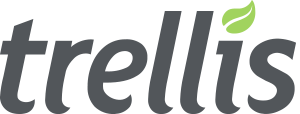Successful healthcare fundraising is essential for clinics, hospitals, and medical research centers to provide exceptional care and maintain operational efficiency.
At the same time, many organizations face restrictive budgetary constraints that slow their progress. For example, the 2022 United States hospital operating margins averaged 0.2%, indicating that all the year’s income was accounted for and spent. Although this measure signals efficiency, it also indicates that healthcare spending is tight.
To overcome this barrier, these organizations can benefit from data-backed, targeted fundraising campaigns that sustainably raise support. In this guide, we’ll uncover how you can use healthcare data to build and improve your fundraising strategies. Let’s begin.
What data should you collect?
Solid data can transform your fundraising strategies by adding impactful storytelling, evidence-based proposals, informed donor cultivation, and many other valuable tools and tactics to your fundraising toolbox.
That said, patient privacy should be upheld while you make fundraising progress. This means your organization must adhere to HIPAA guidelines to maintain patient trust, organizational credibility, and legal standards. Specifically, HIPAA outlines the following data as permissible to collect for fundraising use:
- Patient information (name, address, phone/email, date of birth, age, gender, etc.)
- Health insurance coverage status
- Dates during which they received care
- Treating physician information
- The general type of department where a patient receives care
- General outcome
Information that requires explicit patient consent includes the diagnosis, nature of services, and treatment to uphold privacy standards. While keeping compliance the top priority, your organization can still leverage population health data and insights to level up your strategy. Let’s explore how in the next section.
3 Ways Data Can Improve Your Healthcare Fundraising Strategies
1. Data can align your fundraising objectives
A comprehensive data platform can give your organization clear fundraising objectives to work toward by offering a bird’s-eye view of population health trends, internal performance benchmarks, and patient outcomes tracking.
For example, let’s say you’ve raised more support than you predicted by the end of the year and now have to make a strategic decision about where those funds should be allocated. You can use dashboard visualization to see which areas could most benefit from increased funding by researching:
- Basic quality metrics like readmission rates, infection rates, and patient safety measures as compared to national benchmarks. For example, if you find that your post-surgical unit’s readmission rate is 15% higher than the national average, this would indicate an opportunity to launch a new quality improvement program with advanced technology and enhanced training.
- Overall operational performance of providers to see a clear window into your organization’s effectiveness and efficiency. Using these metrics, you can formulate actionable fiscal recommendations such as reallocating the surplus of funds to enhance the capabilities of high-performing providers which may include resources, training, or equipment.
- High-risk members to pinpoint local communities with specific healthcare needs. For example, you might find that children with asthma from low-income families are disproportionately suffering due to an intense wildfire season. You can then use your funds toward more streamlined outreach programs that provide air quality warnings and preventive respiratory best practices.
By examining the above metrics and more, your organization can make timely and informed decisions about where to direct your healthcare fundraising efforts. This way, you’ll help donors better understand how their contributions are fulfilling a distinct and relevant need.
2. Data can enhance your grateful patients’ program
A grateful patient program is a donation program offered by hospitals and healthcare institutions that targets individuals who have the potential to become major donors. They work by raising financial support for an institution and giving patients and their families a defined opportunity to express their gratitude. To keep your program relevant and effective, you can use data to accomplish the following objectives:
- Create prospect profiles to note a donor’s affinity, propensity, and capacity to give.
- Match donor profiles to causes they’d be most interested in supporting to increase fundraising appeal relevance.
- Build a compelling case for support that facilitates connections between your organization and prospective donors once they’ve been identified.
- Plan and organize a long-term engagement strategy that keeps donors in the loop by sharing outcomes, innovations, and updates.
To keep your prospect data clean and organized, consider investing in a CRM that makes your job easier. For instance, many modern systems include AI and machine learning tools that automate data collection and organization. Then, all your team has to do is launch and maintain outreach based on your collected insights.
3. Data can enhance your fundraising events
Healthcare data provides valuable insights and strategies that can improve event planning, donor engagement, and fundraising outcomes.
In this case, you could use both previous fundraising data in addition to HIPAA-compliant patient data to drive impact. As an example, let’s look at ways you can use data to sharpen your fundraising auction event:
- Segment your donor database based on factors like medical interests, past contributions, or specific program affiliations to determine which donors would make promising auction attendees based on their connection to your cause.
- Share relevant outcome metrics that indicate the tangible connection between donations and the impact they created. This could include mentioning how the funds enhanced medical research or strengthened a specific program. As a result, these metrics will solidify your organization’s reputation and foster trust.
- Share a patient or provider testimonial at your event to personalize your fundraising strategy and drive home how positive metrics affect patient and provider success. For example, a provider may share how their access to new medical technology has enabled them to serve more patients and experience a decreased readmission rate.
By sharing concrete data like this before, during, and after your event, you’ll encourage your event attendees to become long-term donors. As a result, you’ll be able to establish a predictable donation pipeline to fuel your institution’s success.
According to BWF’s 2023 healthcare study, 78.2% of high-income donors consider healthcare to be a top priority when determining where to direct their charitable giving. You can tap into this generosity by making data-backed proposals, spotlighting programs in need of funding, and making informed, sensitive, and patient-centered philanthropic decisions.


